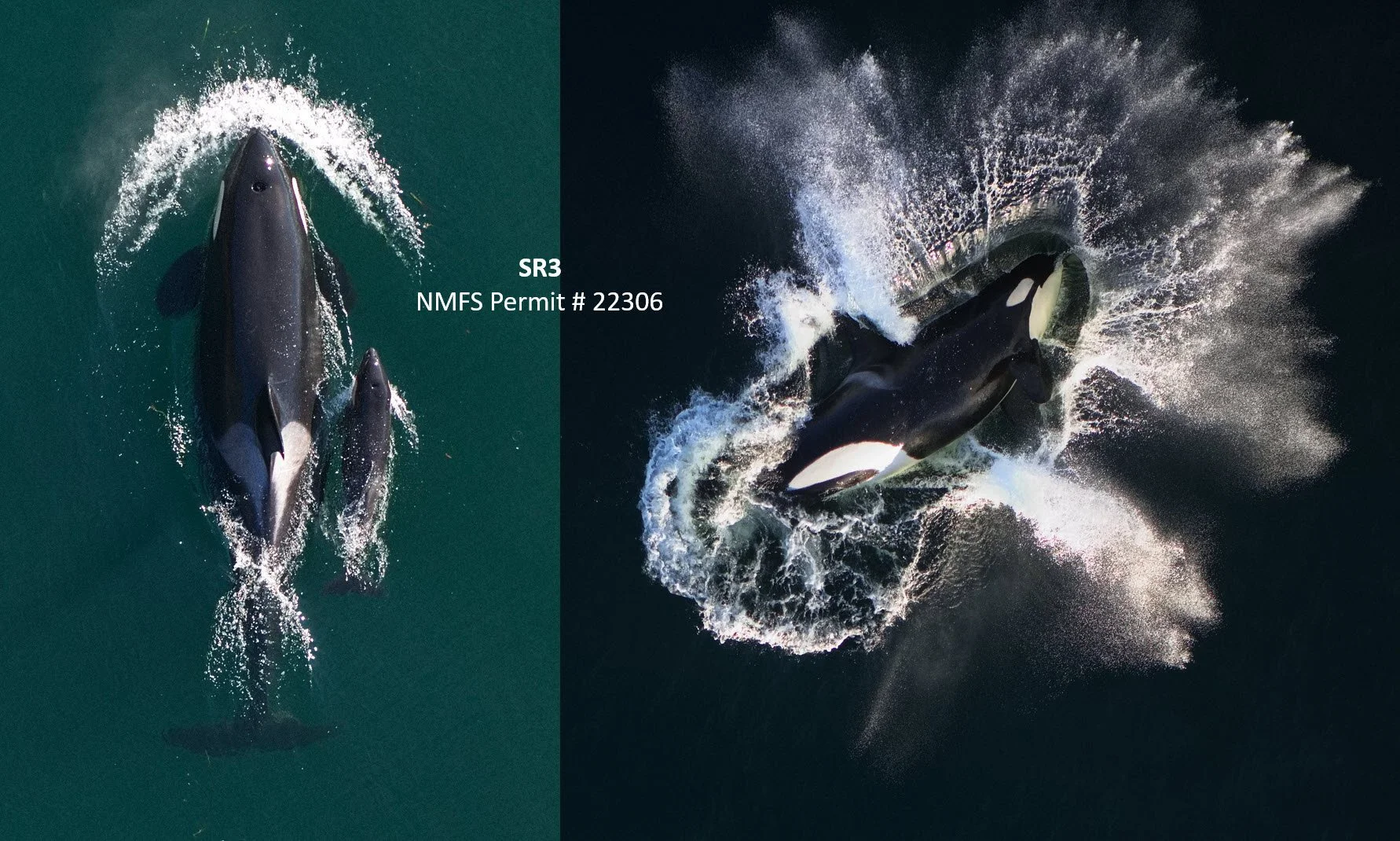Hot off the camera: aerial images of all three pods and the first health measurements of the newest Southern Resident killer whale calf
SR3's Dr. Holly Fearnbach, Dr. John Durban and Sadie Youngstrom have had a successful start to their annual health monitoring of Southern Resident killer whales (SRKWs), extending our dataset to 17 years in this consistent month of September! The team has been flying a custom drone carrying a high-resolution camera and precise altimeter 150 ft high over the whales to non-invasively collect aerial images that enable quantitative measurements of length and body condition - a photogrammetry technique Dr. Fearnbach and Dr. Durban have pioneered over the last decade. So far this month, the team has collected aerial images of members from all three pods (J, K and L) and updated health metrics from these images will be reported to fisheries management agencies in both the US and Canada, with the aim of ensuring that SRKWs have an adequate supply of prey, specifically Chinook salmon.
Notably, the team has imaged and measured the newest member of the Southern Resident killer whale population, L128, and its mother L90. These are the first quantitative data on the health of the pair since L90 gave birth, collected on the first day that the new calf was seen. Measurements show that the mother is in a defined body condition state of “normal” for an adult female at this time of year, an improvement from when she was last measured to be in “poor” body condition state in November 2022. The calf is very small and vulnerable, measuring only 7 ft (compared to its 19 ft long mother), making it the smallest calf in SR3’s measurement dataset and placing its likely age at just a few days at most. SR3 will continue to monitor the growth of the calf, and the body condition of both the calf and its mother, in the coming weeks as part of our annual photogrammetry assessment of the population's health, and in the coming years to hopefully document successful rearing of the calf. In a population this small, every calf matters. Thanks to Dave Ellifrit, Jessica Farrer and their teams from the Center for Whale Research and the Whale Museum, respectively, for their collaboration on the water.
Aerial images of Southern Resident killer whales taken during health research in September 2024: L90 and her new calf L128 surfacing (left) and J16 breaching (right). Images obtained using an octocopter drone flown non-invasively >100ft above the whales under NMFS research permit # 22306.

